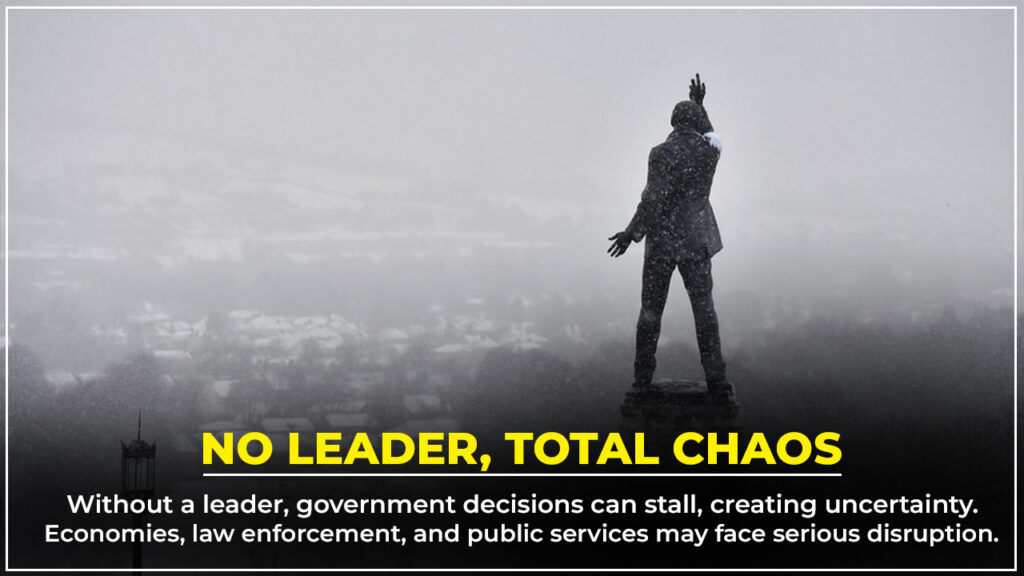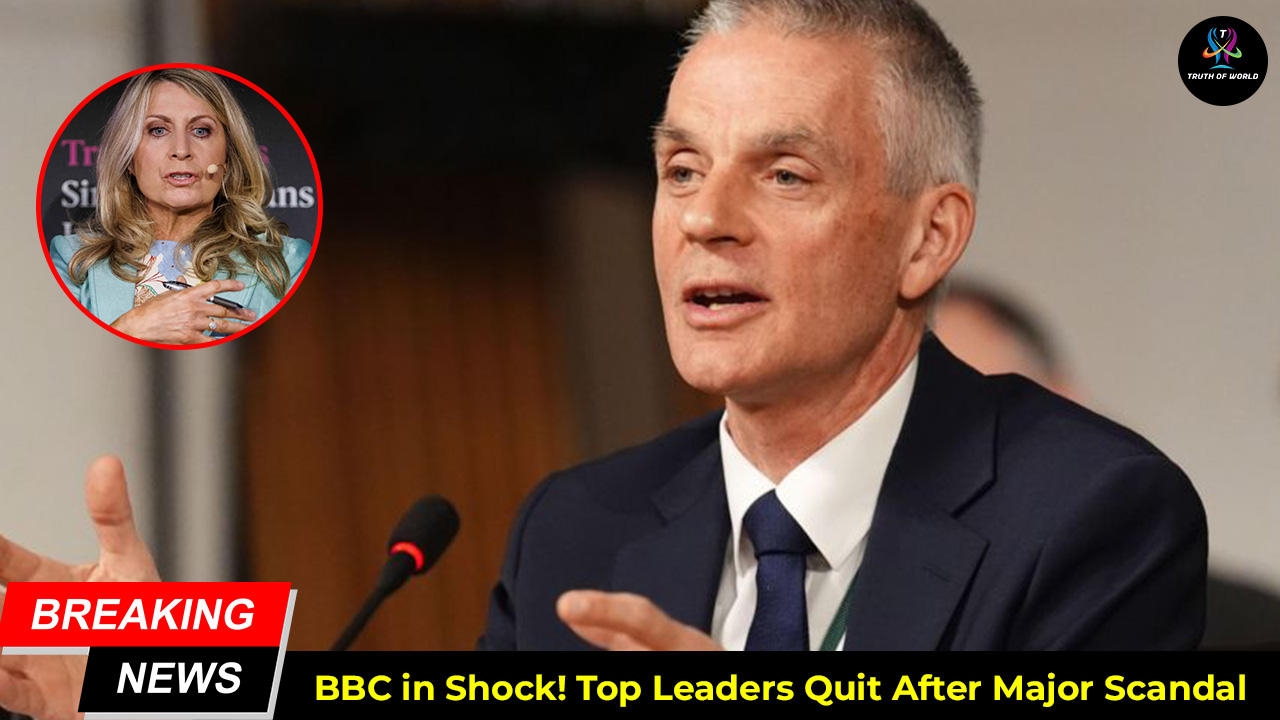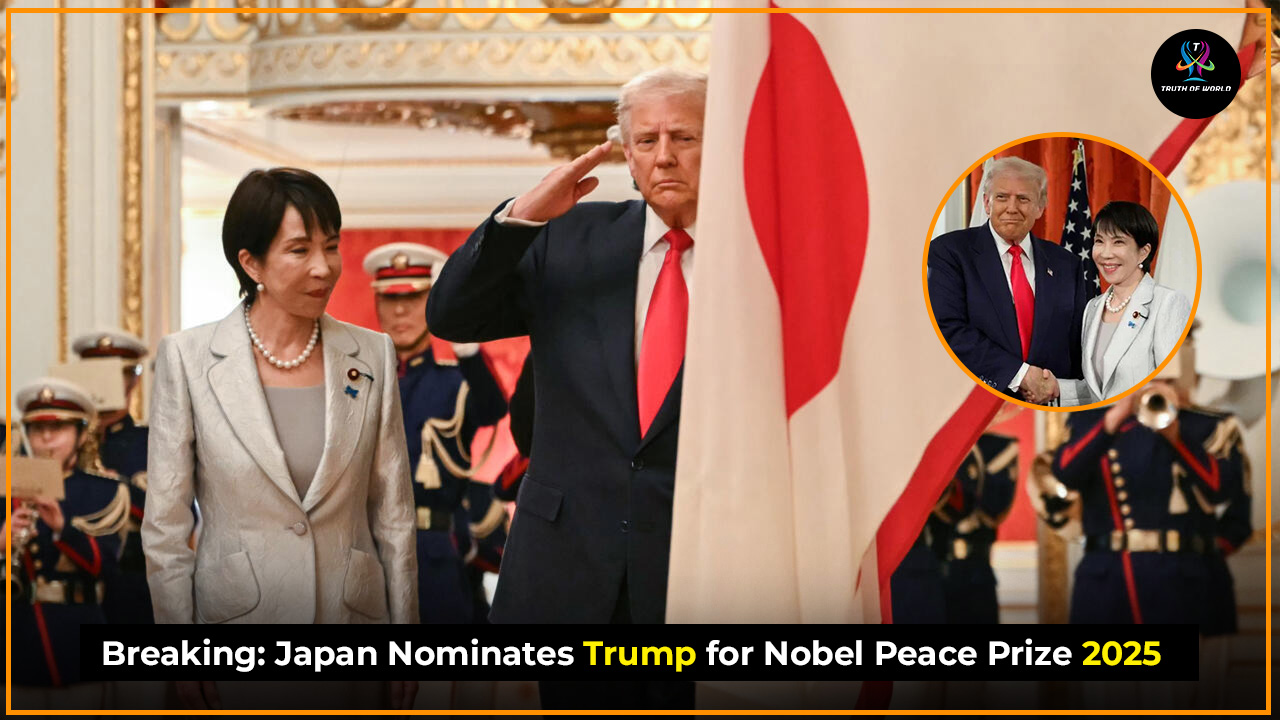Political leadership forms the backbone of any nation. From ensuring law and order to managing the economy, from international relations to public welfare, a leader or governing body plays a pivotal role in keeping a country functional. But what happens when a country suddenly has no leader — no Prime Minister, no President, no central government? While it may seem like a hypothetical scenario, history has shown that political vacuums can and do occur, and their consequences are far-reaching.
A country without leadership is not merely a political question — it’s a matter of national stability, citizens’ daily life, and economic continuity. From Nepal’s recent political turmoil to countries like Somalia, Lebanon, and Venezuela, we have seen examples where leadership vacuums have caused a chain reaction of crises.
The Role of a Leader in a Country
To understand the impact of a leaderless country, it’s essential to first understand what a leader does:
- Law & Order – The head of state or government oversees the security apparatus, ensuring police and military maintain peace.
- Economic Management – Leaders formulate policies, control budgets, manage trade, and ensure economic growth.
- Foreign Relations – Diplomatic ties, treaties, and international negotiations rely heavily on the authority of national leadership.
- Public Services – Education, healthcare, infrastructure, and welfare schemes are implemented under governmental guidance.
- Crisis Response – During disasters, pandemics, or conflicts, leaders coordinate relief and emergency measures.
Without a central figure or functional government, all of these systems face immediate uncertainty.
Political Vacuum: Real-World Examples
1. Nepal
In Nepal, recurring political instability and frequent government collapses have created periods where decision-making slows to a crawl. Citizens face uncertainty, protests erupt, and international confidence in governance wavers. The recent Gen Z-led protests highlighted how citizens respond when they feel governance is absent or ineffective.
2. Somalia
Somalia is a country that experienced decades without a central government. With no leader to unify the nation, lawlessness prevailed, resulting in civil wars, famine, and humanitarian crises. Warlords and local militias filled the vacuum, showing how the absence of leadership can empower non-state actors.
3. Lebanon
Lebanon went over 12 months without a President due to political deadlock. The country saw economic collapse, protests, and social unrest. Public services were disrupted, currency value plummeted, and citizens suffered from shortages of fuel, medicine, and basic necessities.
4. Venezuela
Political standoffs in Venezuela created temporary periods where executive authority was unclear. Hyperinflation, mass migration, and a breakdown of essential services demonstrated how a leadership void magnifies economic and social challenges.
These examples indicate that while the absence of leadership may seem temporary, its impact is often profound and long-lasting.

Consequences of a Country Without Leadership
1. Governance Breakdown
Without a leader or ruling body, laws cannot be enforced efficiently. Civil servants and bureaucrats may lack direction, leading to administrative paralysis. Citizens may resort to protests or self-organized community governance to fill the gap.
2. Economic Disruption
National budgets, trade agreements, and fiscal policies require executive approval. In the absence of a leader, investments slow down, imports and exports are delayed, and currency instability may arise. The stock market, banks, and employment rates can all suffer.
3. Security Risks
Without centralized command, the military and police may operate in ambiguity. This can lead to increased crime, insurgency, or civil unrest. Borders may become vulnerable to smuggling, illegal migration, or even foreign threats.
4. Social Services Breakdown
Healthcare, education, and welfare programs often require coordination from the top. A leadership vacuum can result in hospitals running short of supplies, schools closing, and essential welfare schemes failing, directly affecting citizens’ daily life.
5. International Isolation
Global diplomacy relies on negotiation with recognized leaders. Countries without leaders may lose credibility on the international stage, affecting trade, aid, and alliances. Foreign governments may hesitate to engage, fearing uncertainty or instability.
How Do Citizens React?
People’s responses to the absence of leadership can vary depending on the political culture and societal structure:
- Protests and demonstrations – Citizens often organize movements demanding accountability and quick elections.
- Community Governance – In some areas, local leaders, elders, or NGOs step in to maintain order.
- Migration – When public services collapse, many citizens may emigrate in search of safety and stability.
- Trust in Non-State Actors – In some countries, militias, religious groups, or NGOs fill the vacuum, which can lead to long-term shifts in power dynamics.
Historical Lessons
- Belgium (2010–2011) – Belgium went over 500 days without a formal government. While the country survived peacefully due to strong institutions, reforms were delayed, and policymaking was slow.
- Italy (2011) – Temporary political vacuums during government transitions slowed economic reforms, impacting public confidence.
- Nepal – Frequent Prime Ministerial changes created uncertainty in governance, delaying policies and international projects.
These cases show that countries with strong institutions may survive a leaderless period with limited chaos, but countries with weak institutions risk total instability.
Mitigation Strategies
Countries can implement certain strategies to reduce the impact of leadership vacuums:
- Strong Bureaucracy – Civil servants must continue essential operations even without directives from political leaders.
- Interim Governments – Temporary leadership bodies ensure that decision-making continues smoothly.
- Legal Frameworks – Clear succession laws or emergency provisions help maintain continuity.
- International Support – Diplomatic guidance and humanitarian aid can prevent worsening of social or economic crises.
- Public Communication – Transparent information sharing reduces panic and misinformation among citizens.
A country without a leader is not just a political anomaly — it’s a real threat to stability, economy, and society. While strong institutions and proactive governance can mitigate some effects, history shows that leadership vacuums often result in chaos, public dissatisfaction, and long-term challenges.
Nepal, Somalia, Lebanon, and Venezuela exemplify different outcomes, but the lesson is clear: leadership matters. A country without a Prime Minister, President, or functional government faces a domino effect where law, economy, social services, and international standing all suffer.
Ultimately, whether through elections, interim governments, or institutional resilience, nations must prioritize continuous leadership to protect citizens and maintain stability.





Thank you for the good writeup. It in fact was a amusement account it.
Look advanced to more added agreeable from you!
By the way, how can we communicate?